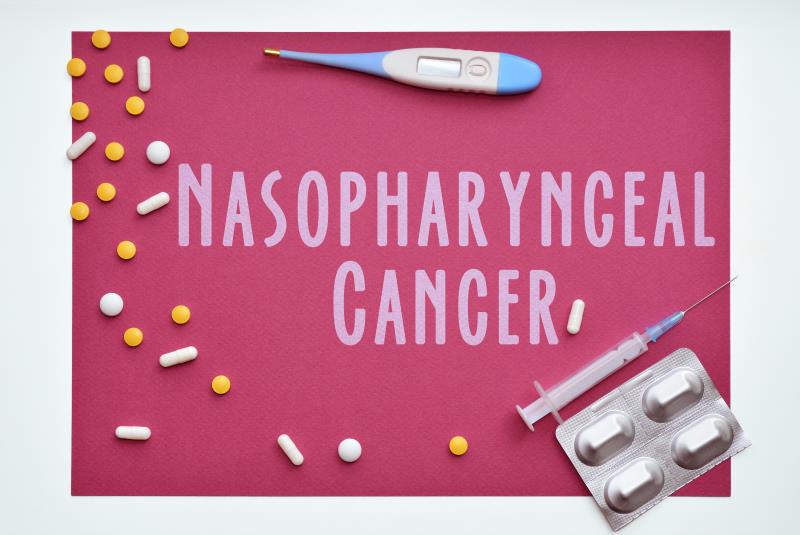
Results from a recent phase III trial in China showed that adding 3-weekly induction gemcitabine plus cisplatin to chemoradiotherapy with cisplatin improved recurrence-free survival (RFS) among patients with high-risk locoregionally advanced nasopharyngeal carcinoma (NPC).
At a median follow-up of 42.7 months, the rate of 3-year RFS, defined as time from randomization to documented disease recurrence or death from any cause, doubled with induction gemcitabine and cisplatin vs standard chemoradiotherapy alone (85.3 percent vs 76.5 percent; hazard ratio [HR], 0.51; 95 percent confidence interval [CI], 0.34 to 0.77; p=0.001). The clinical advantage was evident when outcomes were analyzed in patients who completed the planned course of treatment (ie, three cycles of gemcitabine plus cisplatin plus three cycles of concurrent cisplatin and radiotherapy vs three cycles of concurrent cisplatin and radiotherapy alone). [N Engl J Med 2019;381:1124-1135]
At the time of analysis, patients who received induction gemcitabine and cisplatin demonstrated improvement in 3-year overall survival (OS) rate (94.6 percent vs 90.3 percent; HR, 0.43; 95 percent CI, 0.24 to 0.77) and 3-year distant RFS rate (91.1 percent vs 84.4 percent; HR, 0.43; 95 percent CI, 0.25 to 0.73) compared with those in the standard chemoradiotherapy group.
However, the 3-year locoregional RFS rate was similar in both groups (91.8 percent vs 91.0 percent; HR, 0.77; 95 percent CI, 0.42 to 1.41).
Overall, 94.6 percent of patients had a response after induction chemotherapy prior to the start of chemoradiotherapy, with complete response and partial response demonstrated in 10.0 percent and 84.5 percent of the patients, respectively.
In the study, 480 patients recruited from 12 hospitals in China were randomized (1:1 ratio) to receive gemcitabine (1 g/m2 on days 1 and 8) and cisplatin (80 mg/m2 on day 1), administered every 3 weeks for three cycles, plus concurrent chemoradiotherapy (concurrent cisplatin at a dose of 100 mg/m2 every 3 weeks for three cycles plus intensity-modulated radiotherapy), or chemoradiotherapy alone.
The median dose intensity for concurrent cisplatin was 200 mg/m2 and 300 mg/m2 in the induction chemotherapy and standard chemoradiotherapy groups, respectively. Nearly all patients completed protocol-defined intensity-modulated radiotherapy in both groups.
The incidence of acute adverse events (AEs) of grade 3/4 was 75.7 percent and 55.7 percent in the induction chemotherapy and standard chemoradiotherapy groups, respectively. Patients in the induction chemotherapy group had higher incidence of grade 3/4 neutropenia (28 percent vs 10.5 percent), thrombocytopenia (11.3 percent vs 1.3 percent), anaemia (9.6 percent vs 0.8 percent), nausea (23.0 percent vs 13.9 percent), and vomiting (22.6 percent vs 13.9 percent). Late toxic effects of grade 3/4 were less common with induction chemotherapy (9.2 percent vs 11.4 percent), with deafness or otitis being the most common (5.4 percent vs 6.8 percent). The incidence of severe late complications was low in both groups, with no treatment-related deaths reported.
“The benefit in RFS translated into a 4.3 percent advantage in survival over standard therapy at 3 years, at the cost of a higher incidence of acute AEs,” concluded the authors.